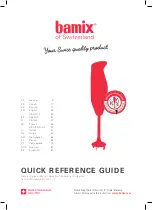
28
DMP801
English
Channel In Matrix
Esta página ofrece una matriz de mezcla para las entradas analógicas a las mezclas de canales de entrada. Cualquiera
de las fuentes de entrada se puede asignar a las mezclas individuales “canal de entrada”�
Cada una de las fuentes de entrada de la matriz puede tener una serie de controles disponibles� Estos incluyen:
Atenuación:
Ajusta el nivel de entrada de cada una de las señales individuales�
Toma panorámica:
Esta le permite ajustar la mezcla izquierda / derecha de las señales entrantes�
ALC:
Este botón asignará el limitador compresor automático del DMP 801 a la señal de entrada correspondiente.
Duck:
Pulsando este botón se aplicará la función Duck para las señales de entrada correspondientes. La función Duck
se puede activar como ducker 1, ducker 2, o apagado, la configuración de los cuales se decide por sus respectivos
menús�
INV:
Este botón invierte la fase de la señal correspondiente.
On:
Este botón le permite activar y apagar la señal de entrada correspondiente. Cuando está apagado, la señal no será
enviada a los canales de entrada seleccionados�
Enrutamiento/Routing:
Cada una de las 8 entradas analógicas pueden ser asignadas a los 8 canales de entrada del
DMP 801� Estos canales de entrada son los que se utilizarán para el procesamiento DSP y se encamina entonces a la
mezcla de salida�
Mix Matrix
Aquí es donde todo sucede� Cada uno de los 8 canales de entrada y las 8 entradas de la matriz pueden ser ajustadas
antes de ser enviadas a la salida principal�
Atenuación:
Ajusta el nivel de entrada de cada una de las señales de las entradas individuales o mezclas de matriz�
Toma panorámica:
Esta le permiten ajustar la mezcla izquierda / derecha de las señales entrantes�
ALC:
Este botón asignará el limitador compresor automático del DMP 801 a la señal de entrada correspondiente. (canal
in, matriz in).
Duck:
Pulsando este botón se aplicará la función de Ducking a la mezcla correspondiente. La función Duck se puede
activar como ducker 1, ducker 2, o apagado, la configuración de los cuales se decide por sus respectivos menús.
INV:
Este botón invierte la fase de la señal de entrada o matriz correspondiente.
On:
Este botón le permite activar y apagar la señal de entrada correspondiente. Cuando está apagado, la señal no será
enviada a ninguna de las salidas de matriz seleccionadas�
Enrutamiento/Routing:
Cada una de las 8 entradas analógicas y las entradas de la matriz se pueden asignar a la
mezcla de salida del DMP 801�















































